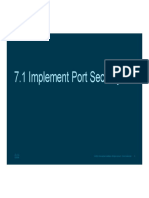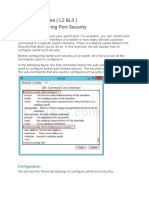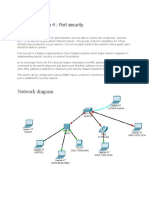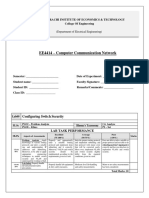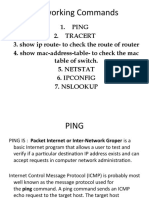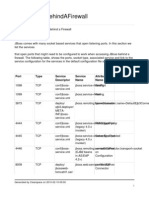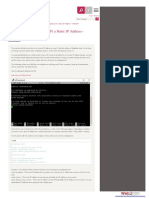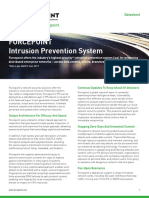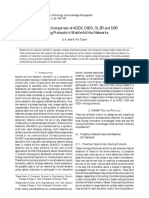0% found this document useful (0 votes)
72 views23 pagesModule 11 - Switch Security Configuration - Part1
The document outlines the configuration of switch security, specifically focusing on implementing port security to mitigate LAN attacks. It details methods for securing unused ports, preventing MAC address table overflow attacks, and configuring port security settings, including violation modes and aging options. Additionally, it provides commands for verifying port security configurations and managing secure MAC addresses on switches.
Uploaded by
22130261Copyright
© © All Rights Reserved
We take content rights seriously. If you suspect this is your content, claim it here.
Available Formats
Download as PPTX, PDF, TXT or read online on Scribd
0% found this document useful (0 votes)
72 views23 pagesModule 11 - Switch Security Configuration - Part1
The document outlines the configuration of switch security, specifically focusing on implementing port security to mitigate LAN attacks. It details methods for securing unused ports, preventing MAC address table overflow attacks, and configuring port security settings, including violation modes and aging options. Additionally, it provides commands for verifying port security configurations and managing secure MAC addresses on switches.
Uploaded by
22130261Copyright
© © All Rights Reserved
We take content rights seriously. If you suspect this is your content, claim it here.
Available Formats
Download as PPTX, PDF, TXT or read online on Scribd
/ 23






